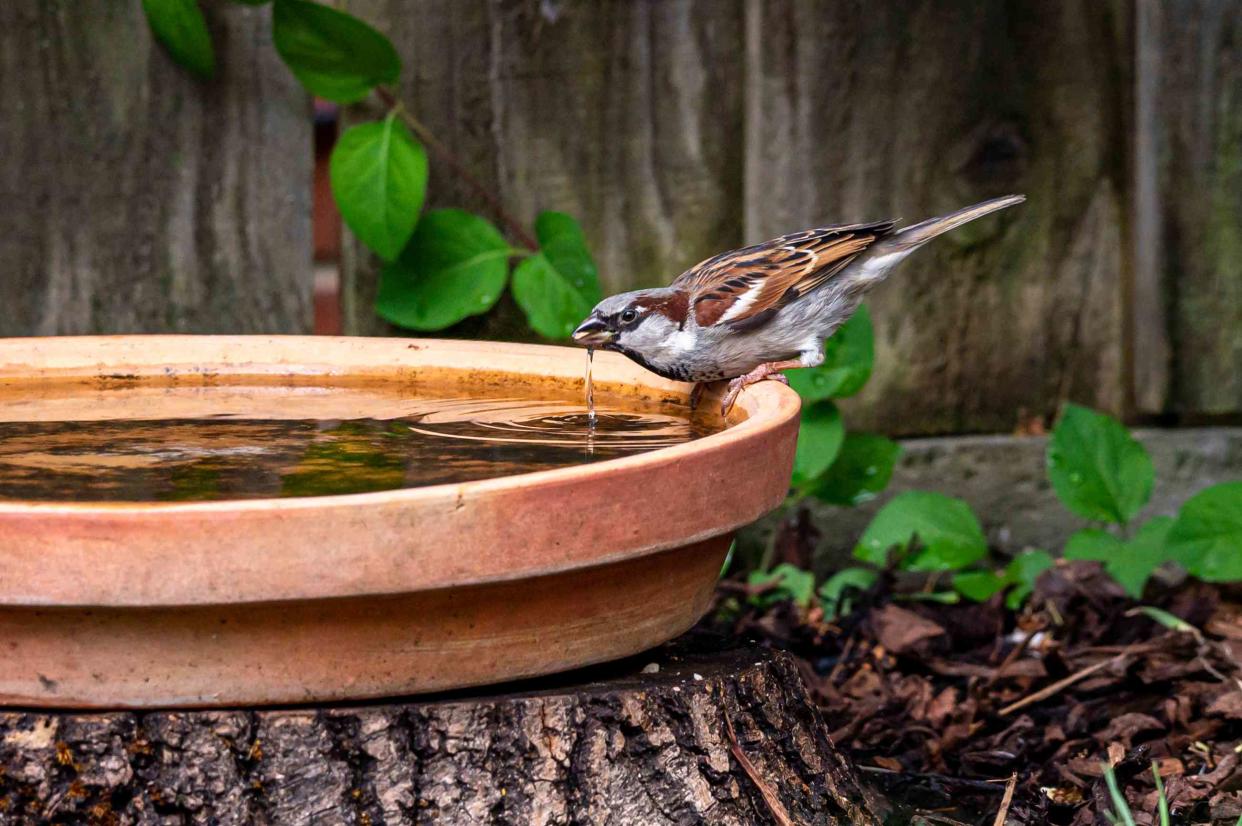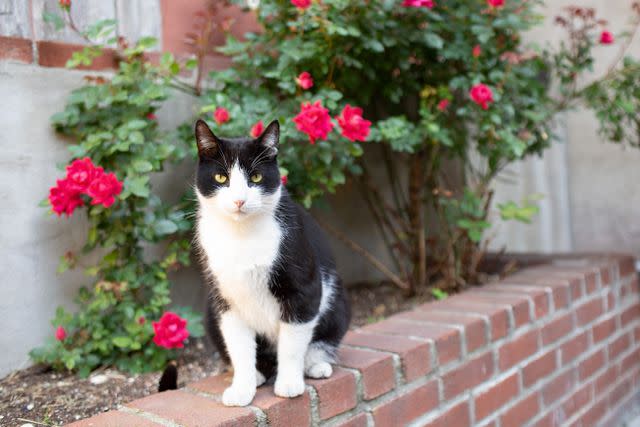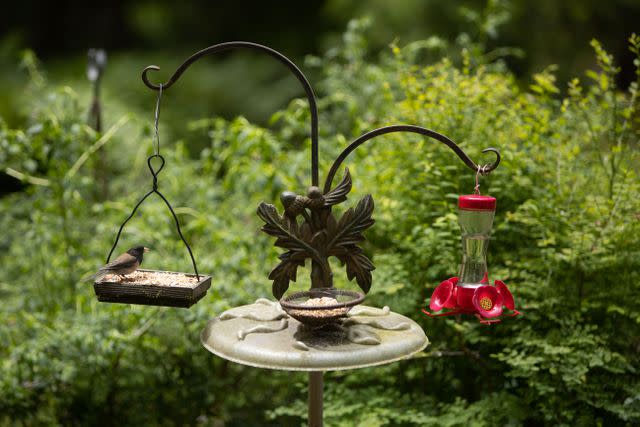Be Nice to the Birds With These Bird-Friendly Yard and Garden Tips

Andi Edwards / Getty Images
With a net loss of 1 in 4 birds in North America throughout the past 50 years, seeing and hearing fewer is becoming a shared experience. However, there are some things you can do to encourage them to flock your way. We spoke to Bo Brown, an avian field biologist who specializes in songbirds, about his golden rules for transforming your yard into a safe haven for feathered friends.
Bo Brown is an avian field biologist specializing in songbirds since 1995. He is also the founder and director of First Earth Wilderness School.
Opt for Native Plants
Brown's biggest piece of advice for attracting birds to your yard is to fill it with native plants, preferably food-producing species with fruits. This is because the key to a bird-friendly yard is making it an insect-friendly yard. The majority of bird species that have declined in the last 50 years are ones that rely on insects for food.
"I'm a huge proponent of planting native species and avoiding exotics that may become invasive," Brown says. "While exotic plants are pretty and pollinators will use them for food, the food is a lot of times sub-quality compared to what the native plant could provide."
He also notes that many exotic plants can't serve as host plants, which are plants that provide nourishment and shelter for insects like caterpillars. Even if the insects do find an exotic plant that is similar to what they are used to eating and living on, it often can't provide the best food or shelter like a native plant.
Since native plants differ depending on your region, Brown recommends checking with your state's conservation department or a local university's agriculture department for a list. He also notes that most states have wildflower and wild plant nurseries that will offer the most suitable species.

The Spruce / jskbirds
Provide Cover With Shrubs and Brush
In addition to providing nourishment, native shrubs offer birds shelter from predators and shade in the summer. Shrubs grow faster than trees, so they are a great option for beautifying your yard and caring for your birds at the same time.
Brown also says you also achieve this by leaving small brush piles in areas of your yard. "Birds like cover, so the goal is to offer enough to where they don't have to go fly across an open lawn to get to a place."
Hold off on Mulching Your Leaves Until Spring
Brown says many insects that birds feed on lay their eggs in leaf litter just before winter. So if you mulch or rake and dispose of them in the fall, you're destroying future food sources for birds in the spring.
This doesn't mean you have to stare at piles of leaves strewn all across your lawn all winter. If you still want to keep your lawn looking tidy, Brown suggests raking your leaves to a more discrete area of your lawn and waiting to mow over them until spring.

The Spruce / jskbirds
Say No to Weed Killers and Pesticides
Brown is strongly opposed to using weed killers and pesticides on your lawn. While many weeds aren't technically native plants, they provide seeds and foliage for small ground-feeding birds. Plus, exposure to chemicals in these products can harm birds and destroy the insects they rely on for sustenance.
Make Your Outdoor Cats More Noticeable to Birds
If you have outdoor cats, putting bells on their collars can help alert birds of their approach, but there is a more effective strategy, according to Brown. He notes that birds grow used to the sound of a bell, so it can become like background noise to them.
"What's even better than a bell is a really bright colored scrunchy around their neck," he says. "Birds see in color, so something bright that is getting closer to them is a better warning."

The Spruce
Offer Bird Amenities, But Pick Ideal Ones
Brown says there's a bit of a controversy over offering birds food, water, and shelter. Some people are under the misconception that providing these comforts and conveniences to birds will make them want to linger longer, preventing them from migrating south before winter on time. However, he encourages people to place bird feeders, houses, and baths in their lawns because factors like weather and the shortening days are what drive migration pushes.
The type of bird food, feeder, bath, the house you choose, and where you place them does matter. Here are a few of his tips on picking out the best versions and spots:

The Spruce / Erica Lang
Bird Food and Feeders
Brown's go-to bird food is black oil sunflower seeds because it's affordable and ideal for several types of bird species. Depending on the bird species near your yard, there may be better options to avoid congregations of starlings and blackbirds, like safflower seed. Elevating feeders around five feet from the ground will keep predators from having easy access to the birds while they are distracted from eating, and so will opting for a feeder with a snake guard.
Birdhouses
Knowing which native birds you want to attract is helpful in determining where to place your birdhouse and how big of an opening your birdhouse should feature. The opening should be big enough to let the bird in but small enough to keep predators out. For example, bluebird houses are best for areas with open lands, like a field, and bluebird houses feature an opening about 1.5 inches in diameter. Other birds, like wrens and chickadees, prefer smaller openings from 1 to 1 1/8 inches.
Birdbaths
Birds use birdbaths for grooming and drinking. If you notice that yours isn't getting very many visitors, it could be because it's elevated too high on a pedestal, it's too deep, or it's in a location that's too exposed. Brown recommends Warblerfall's birdbath tutorial for learning more.
Read Next: Attracting Birds in Summer

